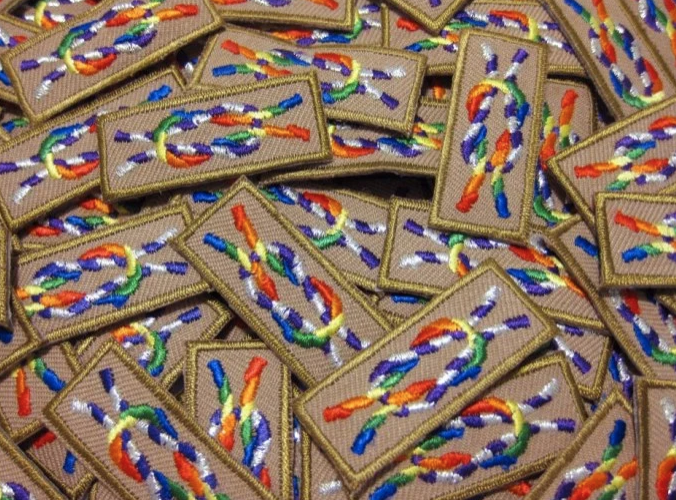No doubt about it, the generic Scouts are in trouble.
There are a number of important reasons for this, including a tsunami of legal problems linked to decades of hidden sexual abuse. Hold that thought, because we will come back to it — because of an important New York Times story with this headline: “Lawsuits. Possible bankruptcy. Declining numbers. Is there a future for the Boy Scouts?”
But here is my main question today: What are the crucial factors that are — statistically speaking — threatening the future of Scouting? Let me add: Is there more to this than the current legal climate?
To answer that question, let’s flash back to a 2015 piece from the news service of the United Methodist Church that ran with this headline: “Churches can have gay Boy Scout leaders.” As you would imagine, United Methodists were divided on the wisdom of that Scouting policy change, as they are divided on every important issue linked to faith and sexuality. However, this story includes a crucial number:
As part of the resolution approved July 27, the Boy Scouts’ executive board also committed to indemnify and defend legally any religious chartered group against discrimination claims. Federal courts, including the U.S. Supreme Court in a unanimous ruling in 2012, have ruled that religious bodies are free to set their own rules for choosing and dismissing leaders. …
More than 71 percent of Scout units are chartered to faith-based groups, reports Boy Scouts of America. The United Methodist Church is second only to the Church of Jesus Christ of Latter-day Saints in the number of congregations that host Boy Scouts of America units. The United Methodist Church also has the highest number of Cub Scouts, with an estimated 200,000 members.
So, 71 percent of all Scout units were, at that time, linked to faith-based groups, with the LDS ranked No. 1 and the United Methodists No. 2. And what about the Baptists? As of two years ago — when the Boy Scouts decided to accept girls who identify as boys — the Association of Baptists for Scouting (ABS) reported that it had nearly 2.3 million members. At that time, about 60 percent of the association’s members were Southern Baptists.
It would appear that it is hard to ponder Scouting’s future without considering the impact of the movement’s policies on sex and gender and its standing among religious groups — especially the United Methodists and various kinds of Baptists. And the believers formerly known as Mormons?
This brings me back to a crucial passage in the current New York Times report:
Looming over the Boy Scouts are lawsuits that threaten to tarnish its image, reports of a potential bankruptcy and a struggle to define what it means to be a Scout today. Most recently, a group of lawyers claimed to have uncovered hundreds of previously unreported cases of sexual abuse at the nearly 110-year-old organization.
It has been a tumultuous time for the Boy Scouts of America. Youth membership has declined more than 26 percent in the past decade. Then, last year, the Church of Jesus Christ of Latter-day Saints announced it would be cutting ties with the organization. The church had been the largest participant in the Boy Scouts program in the United States, making up nearly 20 percent of all youth members.
Over the past decade, victim lawsuits and media investigations have revealed thousands of internal Boy Scout documents, detailing generations of alleged abusers accused of preying on vulnerable Scouts. An investigator hired by the Scouts revealed in January that her team had identified 12,254 victims and 7,819 perpetrators in internal documents from 1946 through 2016.
But critics of the organization say that these files are incomplete and that hundreds if not thousands more victims of sexual abuse in the Boy Scouts were never documented by the organization.
Wait! What was that about the Latter-day Saints — the biggest chunk of the membership pie — cutting ties with Scouting?
I realize that the LDS shift is not “new” news. However, that short passage is the only reference in this long Times feature to the importance of faith-based groups in the Scouting movement. It would appear, at least to me, that this is a subject that deserves more than half a paragraph in a story that is, according to the headline, about the “Future of the Boy Scouts.”
I understand that coverage of the sex-abuse lawsuits is the main point of this story. But does that mean that it needed to ignore the sexuality debates and membership decisions linked to the huge faith groups that host — or once hosted — so many Scouting units?
At the very least, doesn’t this story need to update the status of the United Methodists and Baptists? Are those ties that bind becoming more frayed or not? How about Roman Catholic Scouting efforts?
It would appear that the journalism answer here is “no.”
Let me stress that the sex-abuse angle is valid and that’s where the axe is falling at the moment. I get that. Stressing that angle is totally valid. After all:
The Boy Scouts’ past with sexual abuse is no secret to the organization or the public, but in the #MeToo era, a wave of allegations from decades ago are coming to the forefront.
Several states, including New York and New Jersey, are changing their statute-of-limitations laws to allow victims of child sexual abuse an opportunity to seek justice, opening the door to hundreds of potential lawsuits against the Boy Scouts. Last year, The Washington Post reported that the organization had hired lobbyists in several states to push back against potential statute-of-limitations changes. …
In addition, a December report in the Wall Street Journal that the Boy Scouts were considering filing for bankruptcy, which could give potential victims a limited amount of time to come forward for compensation, prompted lawyers to gather new cases in earnest.
That’s life-and-death stuff, from Scouting’s point of view.
But my question remains: If the goal is to discuss Scouting’s future, why did Times editors send this story to print with less than a paragraph of material about this now progressive movement’s status with faith groups that, for decades, hosted all of those gatherings of Cub Scouts and Boy Scouts?
Just asking. Seems like a pretty big hole, to me. Do the math.










